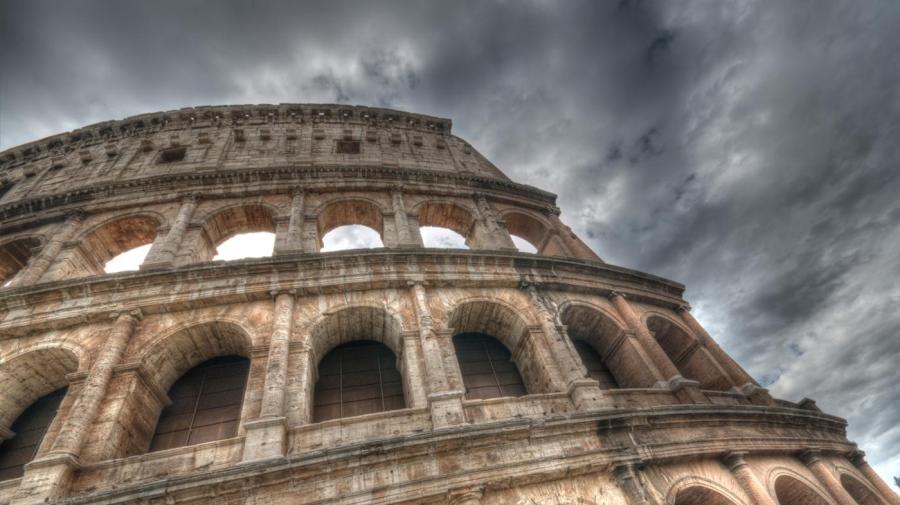What Materials Were Used to Build the Colosseum?

The Romans constructed the Colosseum of a primitive form of concrete. They made concrete using lime, which they burned to create quicklime, water and volcanic ash. The volcanic ash served as the aggregate and is likely the reason Roman concrete, which was 10 times weaker than the concrete used in 2014, remains after almost 2,000 years.
By the time the Colosseum was constructed, the Romans had over two centuries of experimenting with concrete. Their early structures used volcanic ash from a variety of sources, but they eventually came to prefer ash from a single source, the Pozzolane Rosse deposit. This deposit is from a 456,000-year-old volcanic flow located a few miles southwest of Rome. Likely Emperor Augustus helped to standardize the concrete mix used to ensure durability.
The Romans learned to use a different aggregate, Pulvis Puteolanus, when they were doing construction in harbors. The salt in seawater erodes modern concrete. It is also damaging to concrete mixed using the aggregate found in the Colosseum. However, the Romans discovered that changing the aggregate source improved the material’s resistance to the erosion. The durability of such concrete causes the Romans to ship tons of the aggregate to cities located along the Mediterranean for use in building lasting concrete structures.





